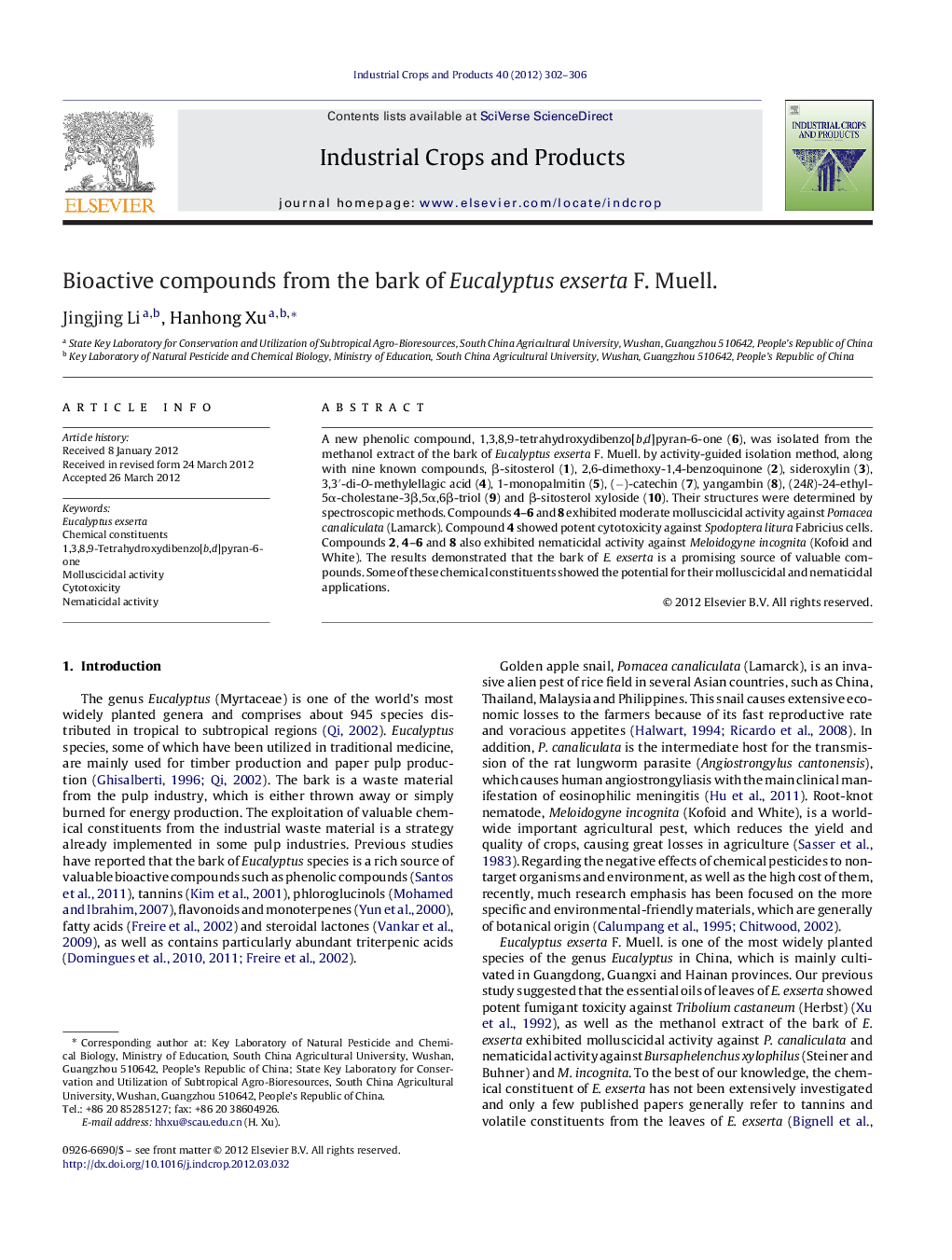| Article ID | Journal | Published Year | Pages | File Type |
|---|---|---|---|---|
| 4513995 | Industrial Crops and Products | 2012 | 5 Pages |
A new phenolic compound, 1,3,8,9-tetrahydroxydibenzo[b,d]pyran-6-one (6), was isolated from the methanol extract of the bark of Eucalyptus exserta F. Muell. by activity-guided isolation method, along with nine known compounds, β-sitosterol (1), 2,6-dimethoxy-1,4-benzoquinone (2), sideroxylin (3), 3,3′-di-O-methylellagic acid (4), 1-monopalmitin (5), (−)-catechin (7), yangambin (8), (24R)-24-ethyl-5α-cholestane-3β,5α,6β-triol (9) and β-sitosterol xyloside (10). Their structures were determined by spectroscopic methods. Compounds 4–6 and 8 exhibited moderate molluscicidal activity against Pomacea canaliculata (Lamarck). Compound 4 showed potent cytotoxicity against Spodoptera litura Fabricius cells. Compounds 2, 4–6 and 8 also exhibited nematicidal activity against Meloidogyne incognita (Kofoid and White). The results demonstrated that the bark of E. exserta is a promising source of valuable compounds. Some of these chemical constituents showed the potential for their molluscicidal and nematicidal applications.
► A new phenolic lactone and nine known compounds were isolated from the bark of Eucalyptus exserta. ► Compounds 4–6 and 8 exhibited moderate molluscicidal activity against Pomacea canaliculata. ► Compound 4 showed potent cytotoxicity against Spodoptera litura cells. ► Compounds 2, 4–6 and 8 exhibited nematicidal activity against Meloidogyne incognita. ► E. exserta is a promising source of valuable active constituents.
